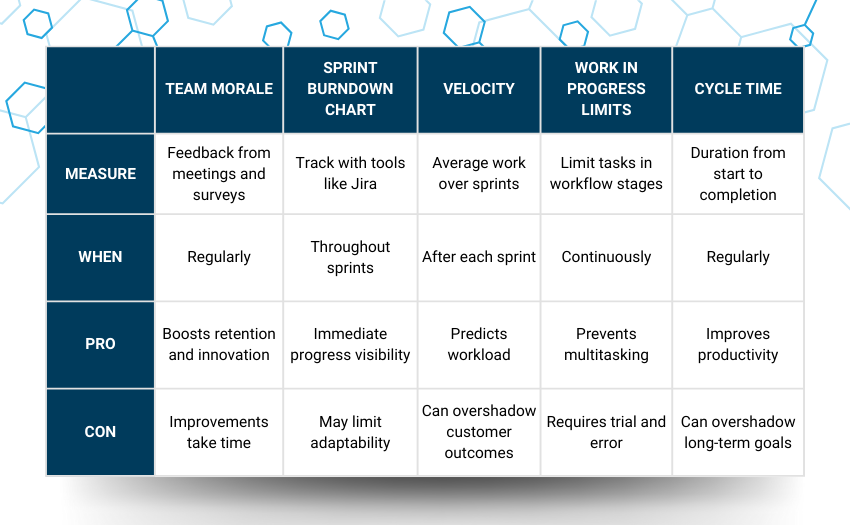Work in progress limits, or WIP limits, are the limitations agile leaders place on the number of tasks in motion within an agile team’s workflow. WIP limits are critical to stakeholder outcomes, preventing team members from overloading their to-do lists with projects, resulting in quality work and improved customer satisfaction.
How to measure: Agile leaders should identify the stages of their agile team’s workflow. For example, the ICAgile kanban board has five columns: “to do,” “in progress,” “blocked,” “for review,” and “done.” Once the workflow stages are established, leaders can limit how many cards can be pulled into one column, such as only three cards at once in the in-progress column.
When to measure: Team members should monitor WIP limits continuously and be encouraged to speak up if cards within columns exceed the agreed-upon guidelines.
Pros & cons: WIP limits prevent multitasking so that agile teams can do their best work and prioritize customer-centricity.
Deciding on the correct work limitations for your team may be challenging and requires trial and error. Monitoring your team’s productivity and happiness week-to-week helps leaders gain a holistic view of the right work balance for the team.
5. Cycle Time
Cycle time represents the time it takes to complete a task, from beginning to end. For example, once a card is moved to the “in progress” column on the kanban board, the cycle time starts, and when the card is moved to the “done” column, the cycle time ends.
How to measure: Cycle time measures how long a project takes to complete and is typically represented in amount of days. Agile teams can manually track the number of days a project takes to complete, or some task-tracking programs have built-in cycle time metrics.
When to measure: An agile team will want to revisit their cycle time metrics to improve their workflow. Another useful application of cycle time is analyzing the duration of new tasks, making it easier to estimate similar projects in the future.
Pros & cons: Analyzing cycle time helps teams improve productivity, streamline their workflow, and identify bottlenecks.
However, because cycle time is a short-term metric, it is important to maintain sight of the bigger picture and larger strategic goals.
Conclusion






